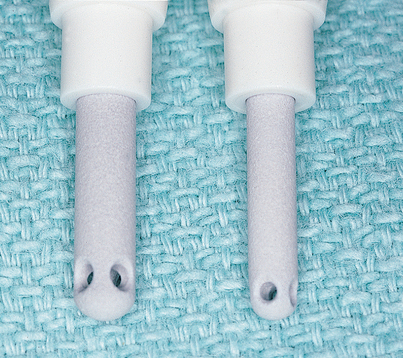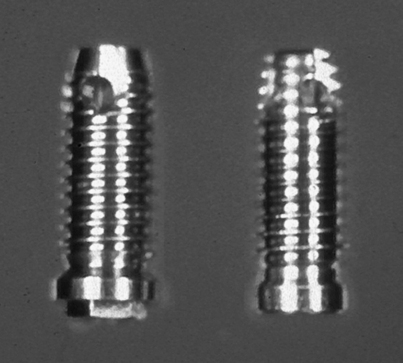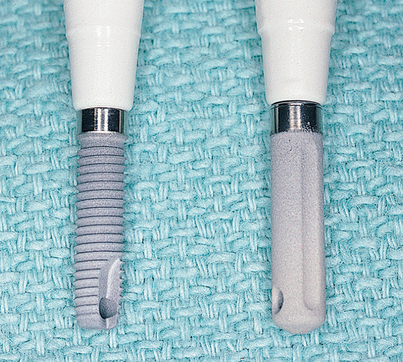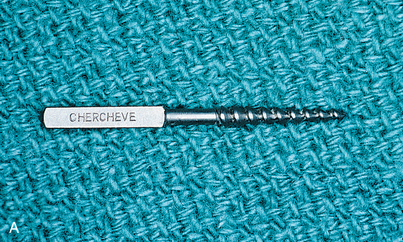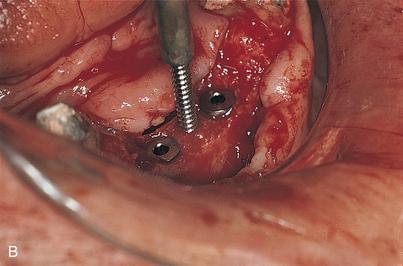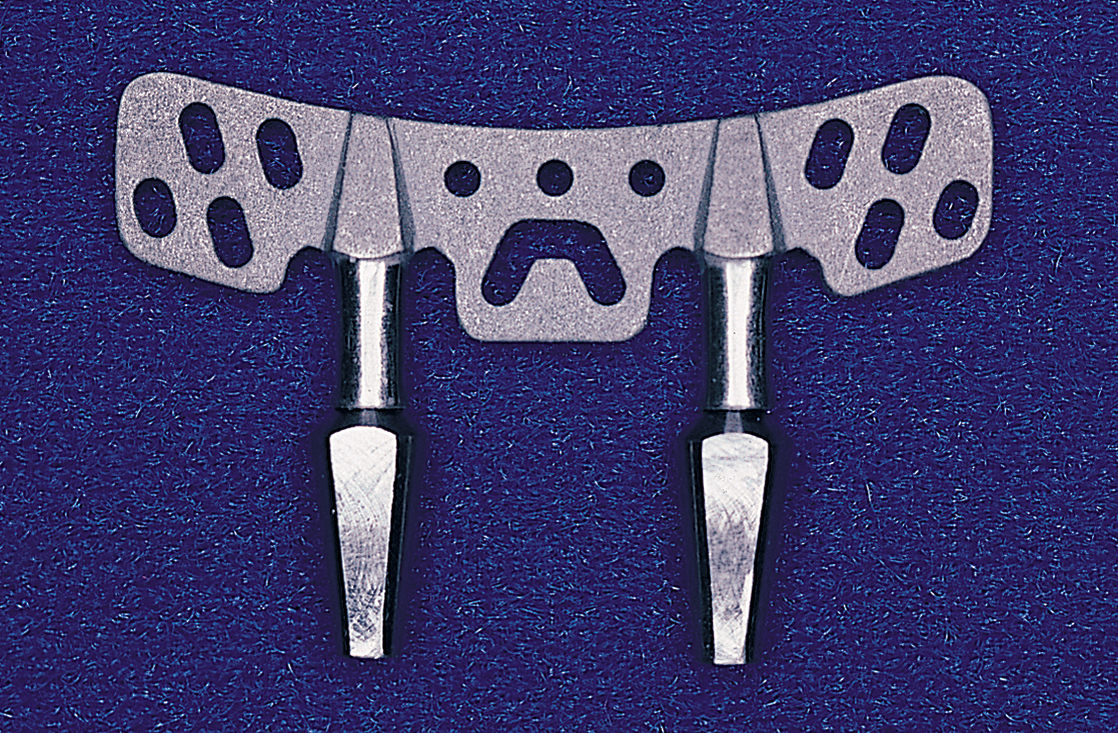CHAPTER 2 Implant Types and Their Uses
IMPLANT TYPES
Endosteal Implants
We begin with a general introduction to the available implant types and the physical conditions required for their placement. Although their basic characteristics are presented in this chapter, the reader should refer to Chapter 5 for optimal prosthetic use; it would be best to read Chapter 5 after completing this chapter, because one of the key guides to implant selection is the patient’s prosthetic requirements.
Crête Mince (Thin Ridge) and Other Mini-Implants
Crête Mince implants are threaded, self-tapping, titanium spirals (Fig. 2-4, A).
Prosthetic options: Crête Mince thin-ridge implants add retention to a long-term, fixed bridge prosthesis by pinning it through the pontics to the underlying bone. They also may be used to support transitional prostheses (Fig. 2-4, B and C). When placed in confined areas between teeth or implants, these implants add long-term additional buttressing to superstructures.
Blade Implants
Blade implants are available as submergible, single-stage and two-stage, and one-piece devices (Fig. 2-5) in three forms:
Prosthetic options: Single or multiple abutments. The suggested use for blade implants is for fixed bridge prostheses in combination with natural tooth abutments, although they may be used in multiples for full arch edentulous reconstructions. If the height of the available bone is adequate for root forms but the width is not, and osteoplasty is not an option, blade implants are the second choice in implant selection. The design of the blade chosen should follow that of the anchor philosophy, in which the shoulder does not meet the cervix at right angles, but rather dips in a semicircular configuration at the site of the neck.
Stay updated, free dental videos. Join our Telegram channel

VIDEdental - Online dental courses


